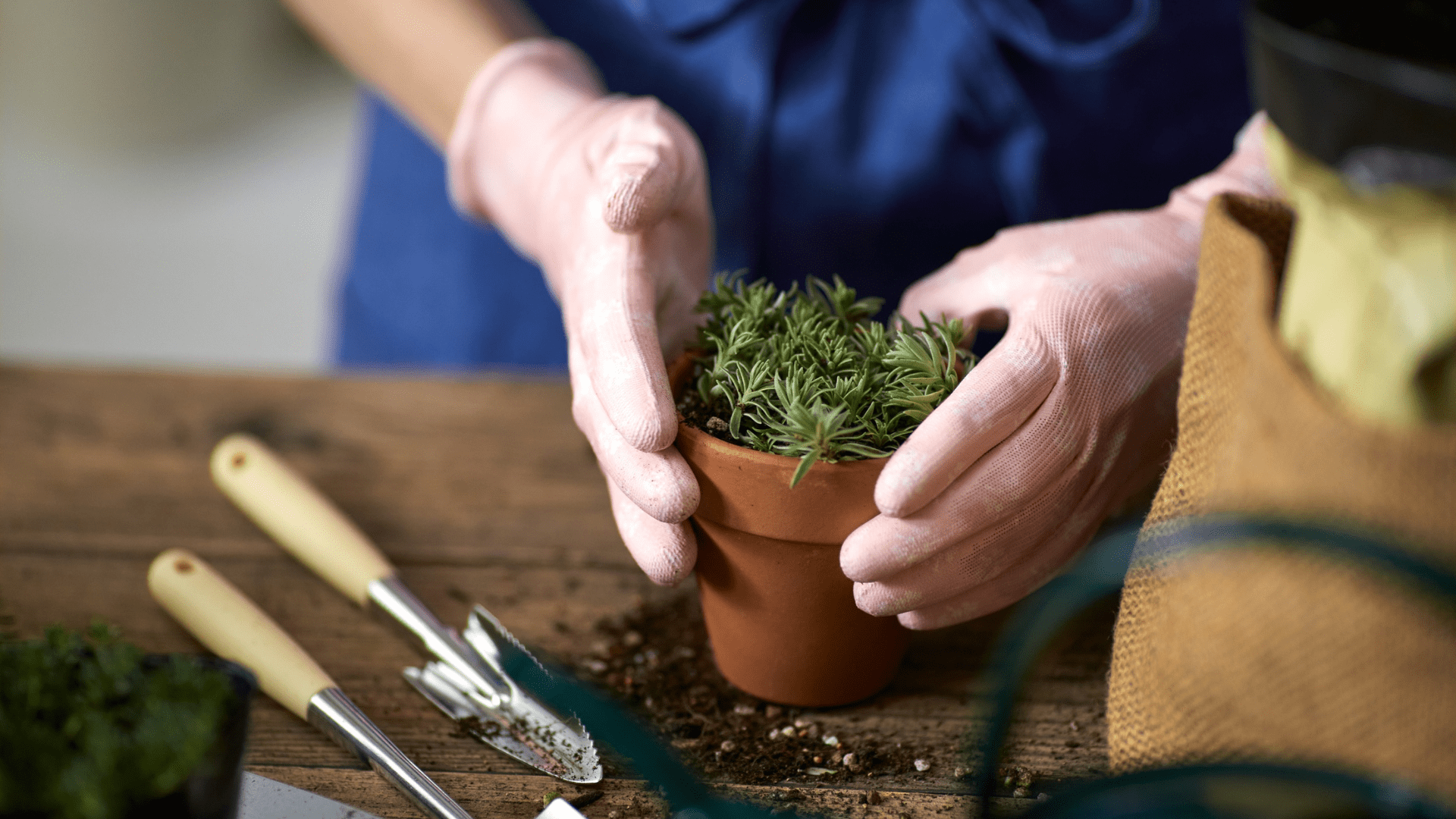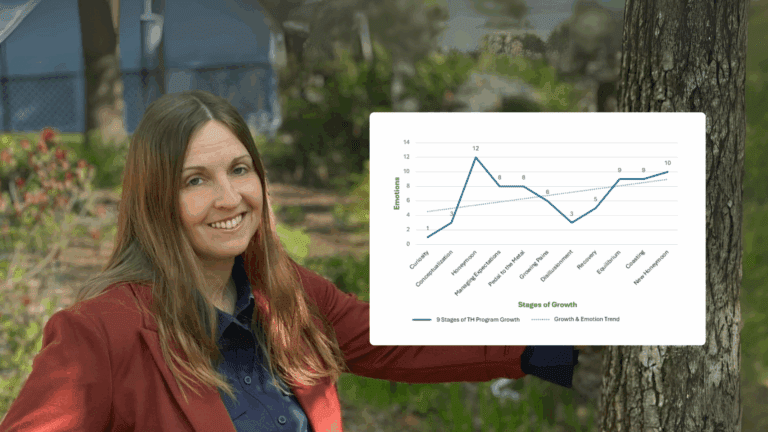Root in Nature will be releasing a series of blogs that explore the intersections of therapeutic horticulture and allied fields. Each piece will highlight how plant and nature-based practices can support the unique goals of different professions. This first article focuses on therapeutic horticulture for social workers, reflecting the essential role they play in supporting individuals, families, and communities.
Table of Contents

Intersections of Therapeutic Horticulture and Social Work
Social work carries some of the most challenging responsibilities in human services. Practitioners hold space for trauma, grief, and crisis, while navigating complex systems, keeping services running, and documenting each step. It is work that demands extraordinary presence and, like other human services and allied health fields, places constant weight on the nervous system.
Therapeutic horticulture offers a supportive complement to social work. With simple, structured, plant-based activities, many of them short, low-mess, and indoors, TH provides practical ways to support clients and give practitioners brief, self-care resets between sessions. The approach can include, (but does not require) a garden and tabletop options make it portable and adaptable across settings and budget structures.
What Therapeutic Horticulture Brings to Social Work
Therapeutic horticulture is a professionally facilitated practice that uses gardening and nature-based activities to support health and well-being goals. In a social work context, it becomes a flexible tool for rapport-building, psychoeducation, skills practice, group process, caregiver support, and community work. Its adaptability is clear: TH can be integrated in offices, inpatient units, outpatient programs, schools, shelters, hospice settings, or home visits. Activities are brief and structured, often predictable yet designed to spark awe and wonder. They provide clear opportunities for client choice while maintaining a supportive framework.
One of its advantages is efficiency. TH often addresses multiple domains of wellbeing; emotional, cognitive, physical, and social, at the same time. This makes it a cost- and time-effective method that aligns with the reality of limited resources, heavy caseloads, and the broad range of needs social workers balance.
It also offers a gentle entry point for clients who may be resistant to treatment, or who find traditional therapeutic conversations inaccessible due to emotional state or cognitive differences. By engaging with plants, clients can participate in a process that feels less confrontational and more inclusive, meeting them where they are and allowing them to engage at their own pace.
This overview explores the value of therapeutic horticulture for social workers, presenting clear, practical ideas for grounding, connection, and meaning-making that align with professional goals and everyday realities.
Importantly, TH complements (not replaces) established clinical approaches. It sits comfortably alongside approaches such as cognitive-behavioral, narrative, and solution-focused therapies, as well as motivational interviewing. And it mirrors the least-restrictive values of social work: enabling independence, offering support only where needed, and keeping safety visible but unobtrusive.

Why Nature Helps: Evidence at a Glance
Research consistently shows that interaction with plants supports nervous system regulation in ways that align with social work practice.
- Sensory grounding (through sight, touch, or light scent) can ease arousal and support co-regulation.
- Attentional resets, briefly focusing on a plant, helps reduce cognitive fatigue between sessions. Provides opportunities for ‘soft fascination’ to restore focus.
- Repetitive, simple acts such as watering a plant provide behavioral activation and predictability.
- Shared plant tasks invite prosocial connection and meaning-making without requiring personal disclosure.
- Metaphorical resonance: Plants embody growth, cycles, and resilience, providing safe entry points for reflection or emotional processing.
- Cortisol reduction: Interaction with plants has been linked to decreased cortisol levels, supporting stress recovery.
- Heart rate and blood pressure: Numerous studies show that simply viewing plants can lower heart rate and blood pressure within minutes.
Indoor plants alone are linked with reduced stress, improved mood, and enhanced focus. A growing body of evidence now documents benefits across populations and settings, much of which is compiled in Root in Nature’s open-access Therapeutic Horticulture Research Database.
Micropractices for Nervous System Care at Work
While facilitation with clients requires training, TH also offers simple “micropractices” for staff wellbeing. These short resets can stabilize the room and support practitioners between sessions. All practices should be adapted to site policies, such as fragrance-free requirements or infection control.
- Place & Purpose Setup (one-time, then 30 sec/day)
Position one or two non-toxic plants where both pr actitioner and visitors can see them, and add a small, neutral cue card (e.g., “quiet corner”). A steady visual anchor helps regulate the nervous system and sets a calmer tone for conversations. Artificial plants are acceptable where live ones can’t thrive, though the sensory benefits are limited.
- Leaf-Contact Reset (1–2 min)
Lightly touch the edge of a real leaf (e.g., spider plant). Trace its outline with the eyes while breathing in for four counts and out for six, repeating for six to eight cycles. This combination of tactile input and paced breathing supports a quick downshift. Hand hygiene is recommended, and plants with irritating sap should be avoided.
- Green-Focus Eye Break (60–90 sec)
Place a real plant within direct sightline. Once an hour, lift the gaze from the screen and rest it on the plant while practicing box breathing (inhale–hold–exhale–hold, four counts each). Even a brief gaze shift provides an attentional reset and reduces cognitive load.
- Desk Herb “Scent-at-a-Distance” (30–60 sec)
Keep a potted, non-toxic herb such as lemon balm or basil on the desk. Gently bruise a single stem and waft it at a distance for three slow breaths. This light olfactory input can anchor attention and support steadier breathing. Where scent is restricted, a personal essential-oil inhaler off to the side can serve as an alternative, though room diffusers should be avoided in shared spaces.
- Two-Minute Water Ritual (2 min)
Slowly water one desk plant, pausing to silently name an intention for the next session (e.g., “go slow,” “reflect back first”). This simple act combines micro-mindfulness with a values cue before heavy work. Surfaces should be protected and any spills dried immediately to prevent slips.
These practices are not substitutes for facilitated TH, but they demonstrate how plants can support nervous systems even in staff-only contexts.

Ethics, Autonomy, and Safety
The practice of therapeutic horticulture resonates strongly with social work values: dignity of risk, least-restrictive environments, respect for client autonomy, and a person-in-environment perspective. It fits this mindset by creating real-life, hands-on moments where participants can practice agency and regain a sense of capability, without overprotecting or removing healthy challenges. At the same time, it acknowledges that growth does not happen in isolation; people are always in relationship with their surroundings, and therapeutic horticulture makes the environment itself a partner in the process of regulation and resilience.
Safety remains part of the frame, but it is minimal and visible, not the focus. Materials are kept sensible; non-toxic plants, simple tools, optional scents, and clean potting mix with hand hygiene and table protection. Steps are predictable while also leaving room for awe and curiosity, with clear choice points and opt-outs, and support is offered only where truly needed so that independence stays central.
Work is always carried out within scope, supervision, and site policies, such as fragrance-free requirements, infection control, or photography consent. The goal is to enable clients to engage as fully as possible on their own, building confidence, connection, and resilience, while the practitioner keeps the foundation steady beneath them.
Gentle Assessment Through Plant-Based Tasks
Plant-based activities open a subtle window for observation. Without formal testing, practitioners can notice grip strength, sequencing skills, attention span, arousal regulation, frustration tolerance, reciprocity, or meaning-making through choices and reflections. Therapeutic horticulture can also help track how someone is progressing developmentally – physically, emotionally, and relationally. Growth in fine or gross motor skills, shifts in emotional regulation, increased empathy for self and others, or changes in social reciprocity may all be visible in the way a person engages with plant-based tasks over time.
In group settings, TH provides a natural way to assess dynamics—how individuals respond to shared tasks, manage conflict, or navigate cooperation. In family contexts, it can reveal interaction patterns, roles, and communication styles, offering insight into relationships without the intensity of formal assessment.
Prompts remain light and choice-based: “What felt easiest?” or “What might help next time?” Reflections highlight strengths first, with adaptations added only where independence can be enhanced. When documentation is required, brief notes capture participation, regulation cues, developmental observations, client language, group or family dynamics, and next steps.
Examples of Facilitated Practice
Facilitation requires prior training in therapeutic horticulture. The following examples illustrate the shape of practice in social work settings – not step-by-step instructions. Notice how goals, pacing, and client choice remain central.
- Sensory Grounding with Herbs (individual or small group)
Purpose: Down-regulate arousal and orient to the present before or after difficult content.
Shape: A short, tabletop interaction with a soft, non-toxic herb such as lemon balm. The facilitator sets a predictable rhythm—notice, describe, pause—using gentle prompts (“What do you notice visually? What feels steady right now?”).
- Why it fits social work: Supports co-regulation, rapport, and gentle check-ins without pushing disclosure.
- Light safety: Scent optional; gloves available if needed.
- Hope Cuttings in Water (group connection)
Purpose: Agency, prosocial connection, and future orientation in a brief, low-mess format.
Shape: Participants select a non-toxic cutting (e.g., spider plant, coleus), place it in water, and label it with a word that supports coping such as “steady,” “breathe,” or “rest.” Sharing is optional, with written reflection available for quieter participants.
- Why it fits social work: Builds peer connection and narrative without requiring disclosure of personal history
- Light safety: Pre-snipped stems if tools are restricted; surface protection; no ingestion.
- Memory Herb Pot for Grief (1:1; palliative, bereavement, caregiver support)
Purpose: Meaning-making and continuing bonds through a tangible, symbolic practice.
Shape: The client chooses an herb, such as thyme, and gently pots it while recalling a safe memory – perhaps a meal, a place, or a shared moment. Closing reflection is simple: “What would caring for this plant remind you to care for in yourself this week?”
- Why it fits social work: Aligns with grief work, values authorship, and supports a strengths-based practice.
- Light safety: Gloves for skin concerns; scent-at-a-distance optional.

Adaptability Across Settings
Therapeutic horticulture is highly adaptable across social work settings. Because it emphasizes client choice, predictable structure, and light-touch safety, it aligns well with social work training and values. Programs can be scaled to fit different environments, from inpatient psychiatry to home visits, while supporting assessment, regulation, and relationship-building. Below are examples of how TH programs can take shape in diverse social work contexts.
- Inpatient Psychiatry (acute/sub-acute)
A structured six-week program offering twice-weekly 45-minute plant-based sessions. Activities rotate between plant propagation, indoor/outdoor plant care in secure programming sites, and nature-based mindfulness reflections/activities designed to support regulation, engagement, and social connection within a safe framework.
- Outpatient / Community Mental Health (adult)
A weekly 45-minute group where participants nurture personal plants over several months. Sessions weave in intention-setting, psychoeducation, and reflection, using plant care as a bridge for ongoing skills practice and therapeutic dialogue.
- Youth Mental Health / School-based
An eight-week program integrated into school counseling services. Students care for fast-growing seeds and group plantings, building frustration tolerance, turn-taking, and emotional expression alongside structured lessons on growth and resilience.
- Crisis Services / Brief Intervention
A drop-in micro-program offering 2–5 minute plant-based grounding practices during intake or de-escalation. Designed for ultra-short encounters, it focuses on nervous system stabilization and leaves participants with a tangible coping prompt.
- Palliative / Hospice & Caregiver Support
An ongoing bedside and caregiver program centered on gentle, sensory-rich interactions with plants. Participants engage in observation trays, small potted or dried herbs, or memory-linked planting, creating opportunities for meaning-making, comfort, and connection.
- Shelters / Community Programs
A rolling 12-week group where residents learn to grow vegetables and herbs in container or raised-bed setups. The program emphasizes practical food production, nutrition education, and the link between healthy eating and mental wellbeing. Participants gain agency through cultivating their own food, explore cultural expression in plant choices, and build peer connection by sharing both the work of tending and the harvest itself.
- Home Visits
A modular program where practitioners bring portable plant-care kits into the home during routine visits. Each short session integrates functional plant tasks with observation of independence, environment, and family or caregiver dynamics, supporting ongoing assessment and growth.
Across all settings, the principles remain: least restrictive, choice-driven, and safety-conscious without becoming safety-dominated.

Documentation and Outcomes
When documentation is required, TH aligns easily with social work models such as SOAP or DARP notes. Outcome notes focus on participation, regulation shifts, client language, meaning-making, adaptations, and next steps.
Examples:
- D: 10-min “Hope Cuttings” tabletop; client opted in; chose spider plant cutting.
- A: Affect steadied (quieter voice, slower breath). Named coping word “steady.” Engaged with 2 peers; required no assistance for steps.
- R: Will place cutting by desk; plan to pause/breathe when noticing tension.
- P: Check-in next session; consider adding brief home plant-care prompt.
- S: “This scent reminds me of Sunday dinners.”
- O: Completed Memory Herb Pot independently; gaze softened; shoulders lowered.
- A: Present-focused engagement; meaning-making linked to values.
- P: Client to water plant twice this week; open next session with reflection on what caring for the plant supported.
Getting Started with Therapeutic Horticulture
For those interested in bringing TH into practice, several steps support safe integration:
- Complete formal training, such as an introductory course.
- Apply safety and ethics checklists for plants, materials, and accessibility.
- Align activities with site policies and supervisory guidance.
- Screen participants for contraindications, allergies, or sensitivities.
- Pilot low-risk, seated activities with clear opt-outs.
- Debrief sessions and document when required.
With training and structured rollout, TH becomes a practical, repeatable tool that enhances both social work practice and practitioner wellbeing.
Resources and Support
Several resources extend the learning:
- A self-paced Introduction to Therapeutic Horticulture course to build facilitation skills.
- The GrowTH Network, which offers an activity database, resource library, and professional community.
- The open-access Therapeutic Horticulture Research Database, with more than 800 studies searchable by population, setting, and outcome.
- Downloadable safety checklists and documentation prompts for quick team use.
Why Therapeutic Horticulture Belongs in Social Work
Therapeutic horticulture aligns deeply with the values of social work. It offers practical, evidence-supported ways to create moments of steadiness, strengthen agency, and build connection. With modest materials and thoughtful facilitation, TH creates opportunities for clients to practice independence, discover meaning, and carry resilience forward, while also supporting the nervous systems of practitioners who hold so much.
It begins with training, grows through community support, and continues through everyday practice. Therapeutic horticulture provides social work with tools that are simple, safe, and deeply human, tools that remind both clients and practitioners that growth is always possible.

Emilee Weaver
Director of Learning & Community Engagement




